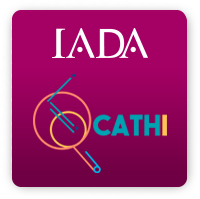TASKS ANALYSIS IN SPECIALIZED CONSTRUCTION WORK IN THE ALTOS NORTE REGION OF JALISCO
Construction workers in Mexico are exposed to ergonomic risks that, in the medium or long term, are associated with musculoskeletal disorders in both upper and lower limbs. Performing manual activities above shoulder level represents one more factor that can be associated with muscle fatigue of the...
Saved in:
| Other Authors: | , |
|---|---|
| Format: | Capítulo de libro |
| Language: | English |
| Published: |
SEMAC
2022
|
| Subjects: | |
| Online Access: | http://semac.org.mx/images/stories/libros/Libro%20SEMAC%202022.pdf |
| Tags: |
Add Tag
No Tags, Be the first to tag this record!
|
| Summary: | Construction workers in Mexico are exposed to ergonomic risks that, in the medium or long term, are associated with musculoskeletal disorders in both upper and lower limbs. Performing manual activities above shoulder level represents
one more factor that can be associated with muscle fatigue of the upper limbs, which leads to a reduction in the physical performance of workers. In the Altos Norte region of Jalisco, traditional roof construction consists of the manual placement of "wedges" to form a vault that is later cleaned to eliminate excess mixture and leave an apparent view. This activity involves a specialized operator whose main activities are performed standing up and with his arms above shoulder level to remove the excess mixture, using a small hand tool. When performing the task analysis, the postures adopted by the worker are classified and prioritized to determine which postures require further analysis, after the classification performed according to the
methodology used, 3 activities were detected as relevant, which together accumulate 90% of the images analyzed, in addition, by using the Humantech® Industrial Ergonomics software, the members involved in the operation are evaluated and the level to which they are exposed is determined by means of a risk scale. With this tool, both upper members were identified as having a high risk level, accumulating an overall rating of 33 points, on a scale of 30 to 49 for the high level. |
|---|
